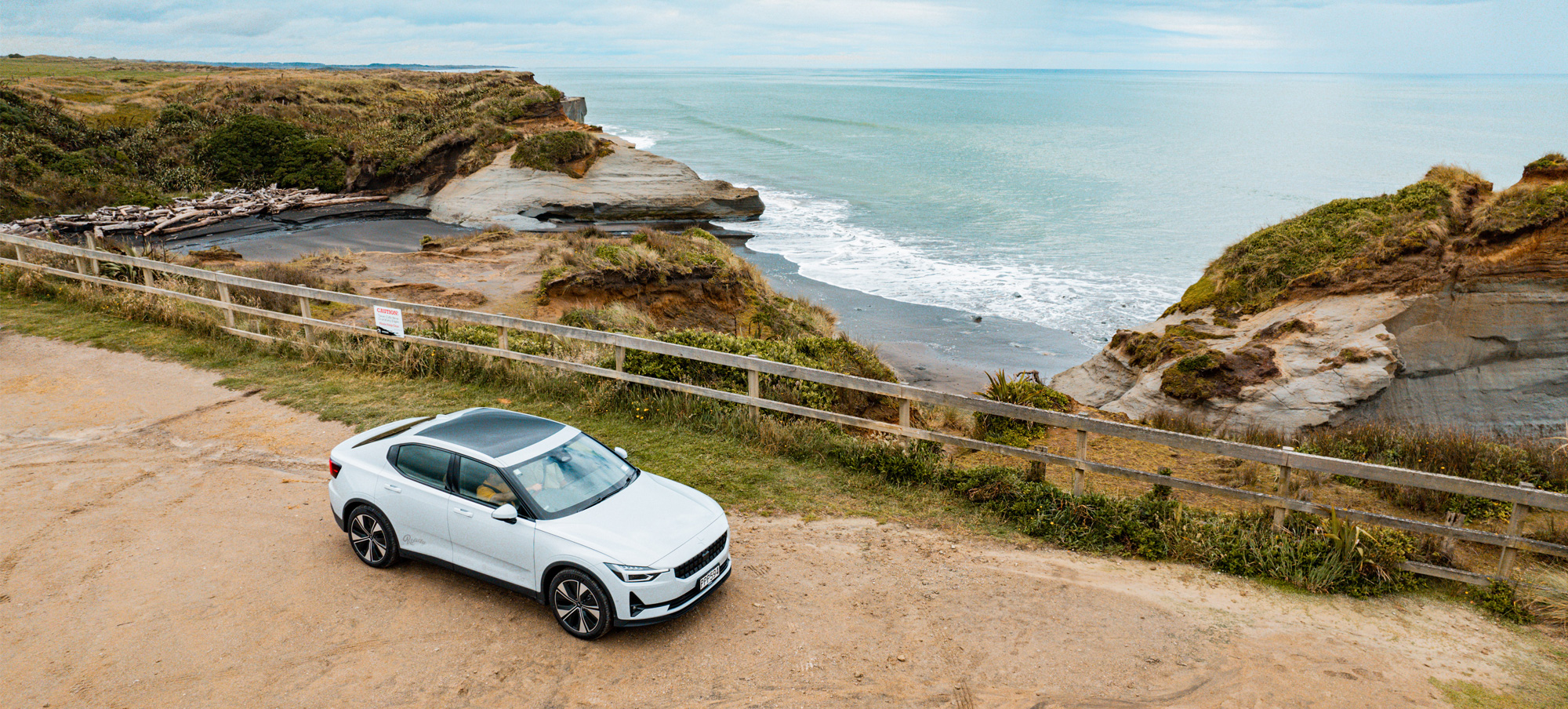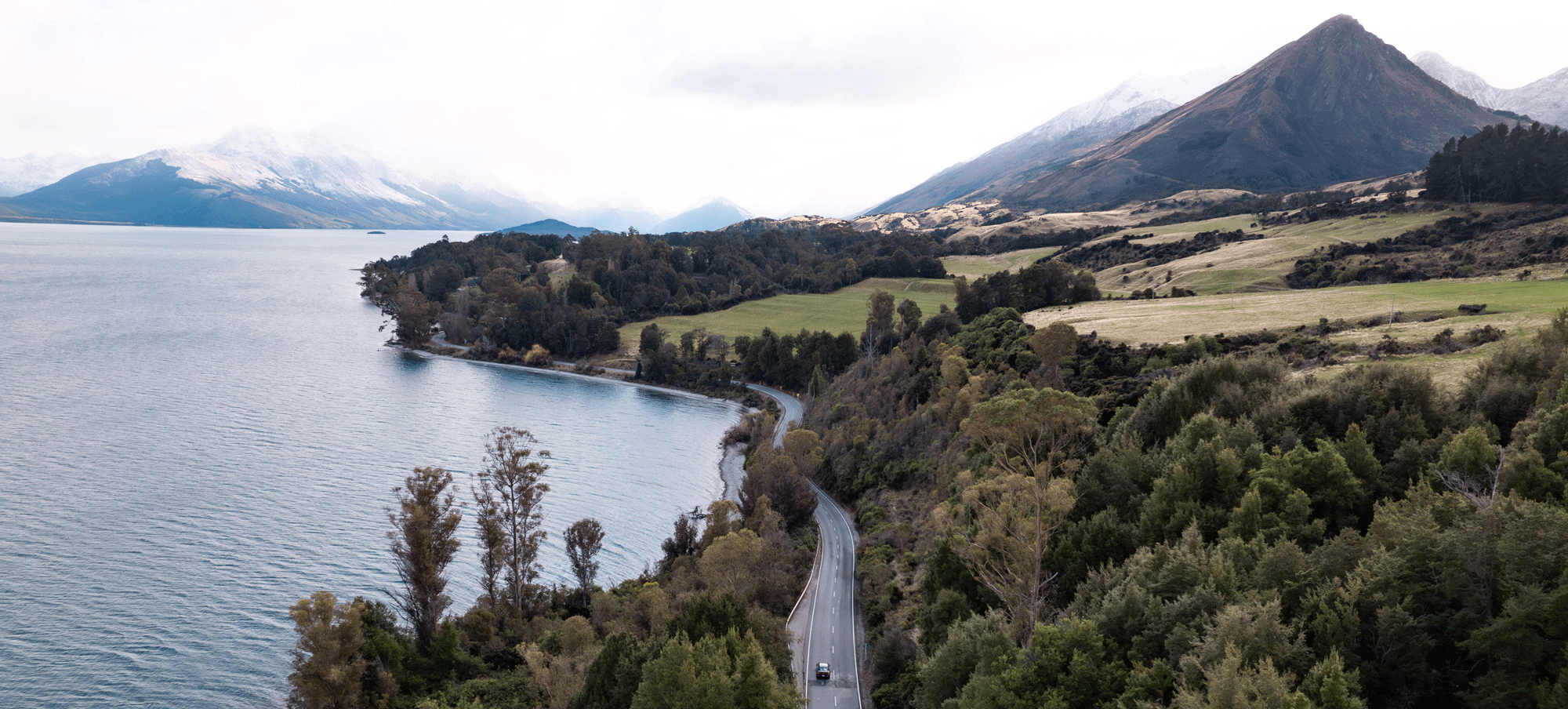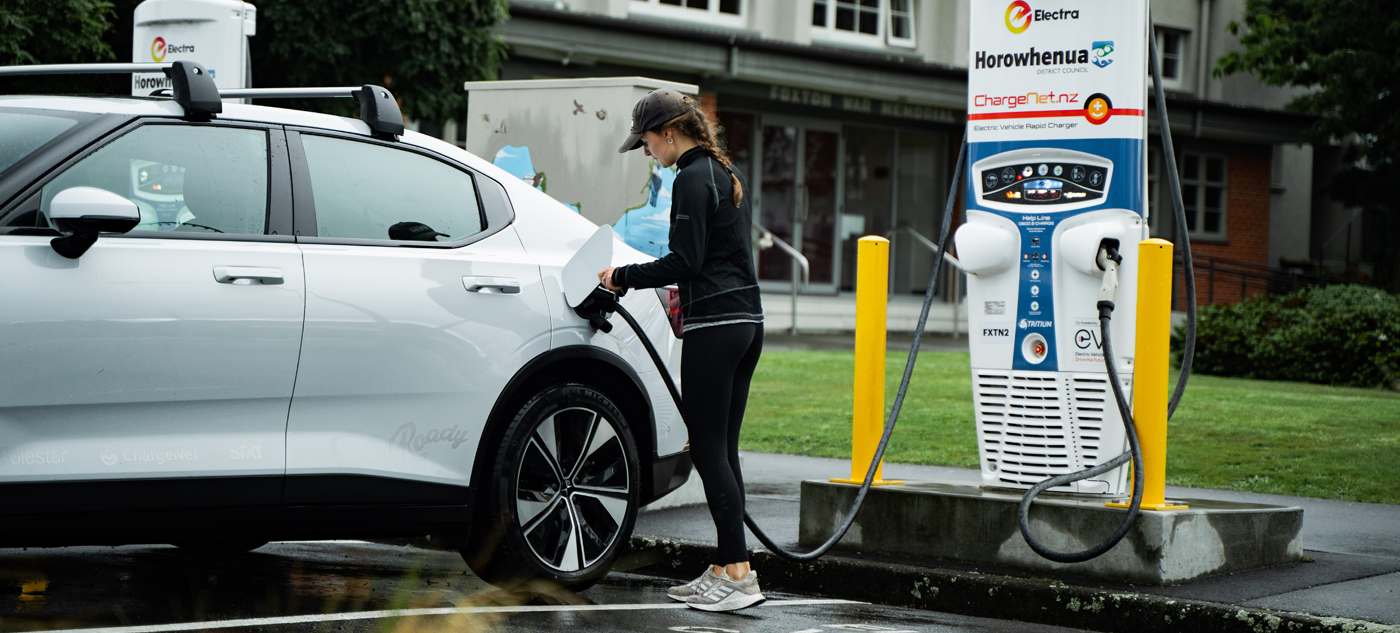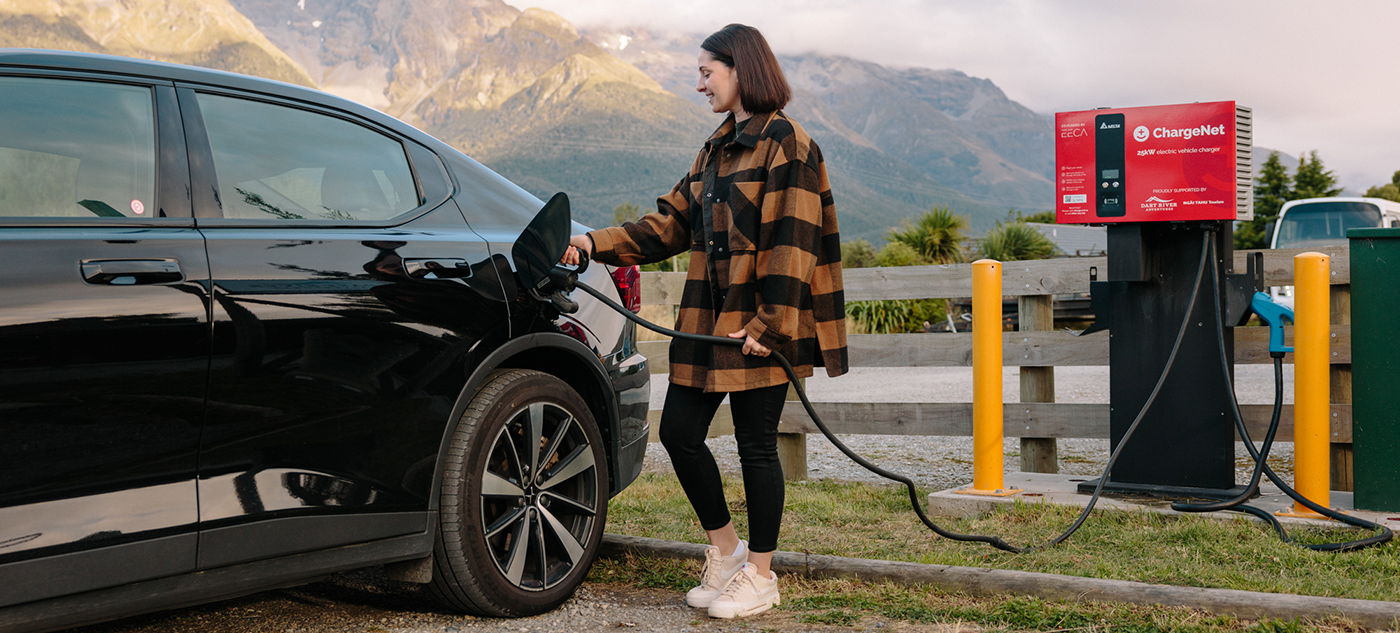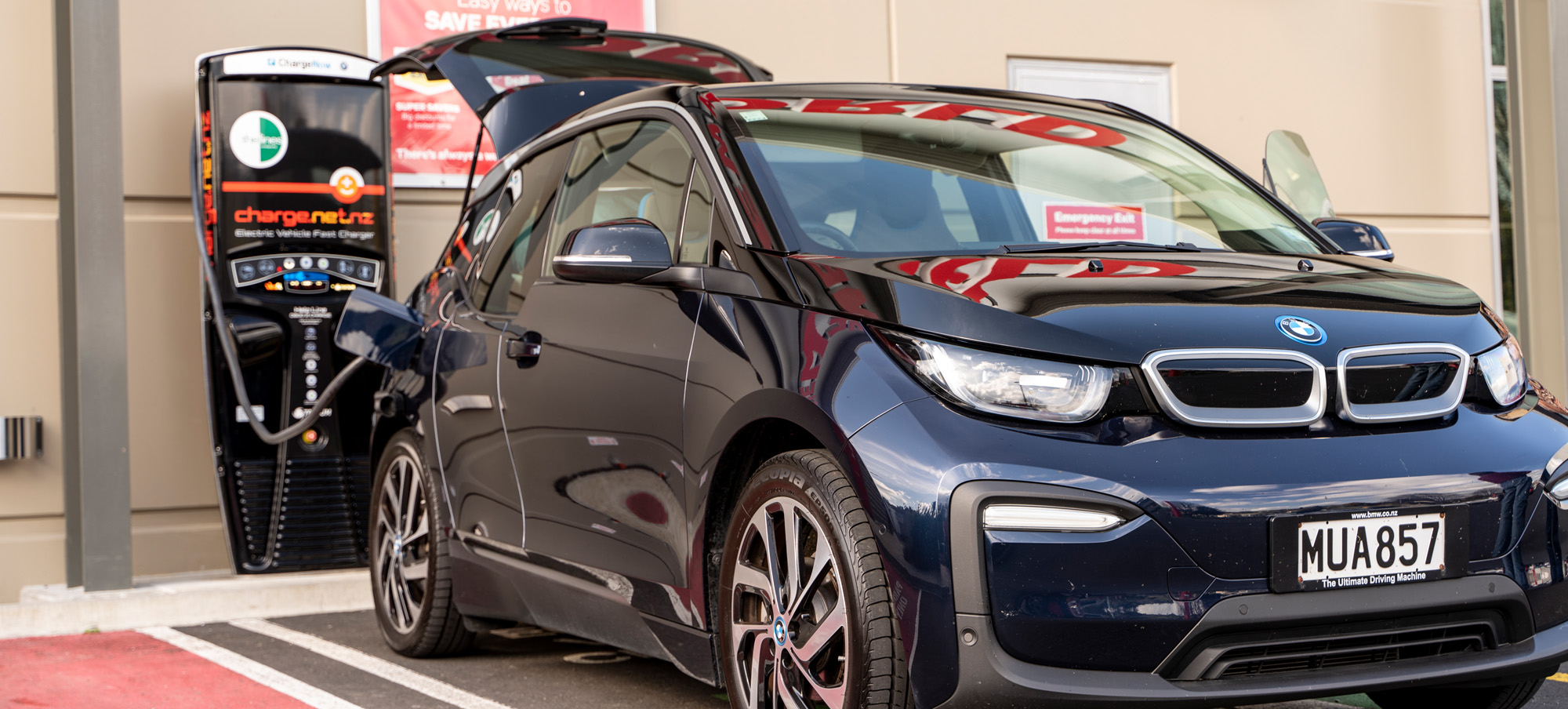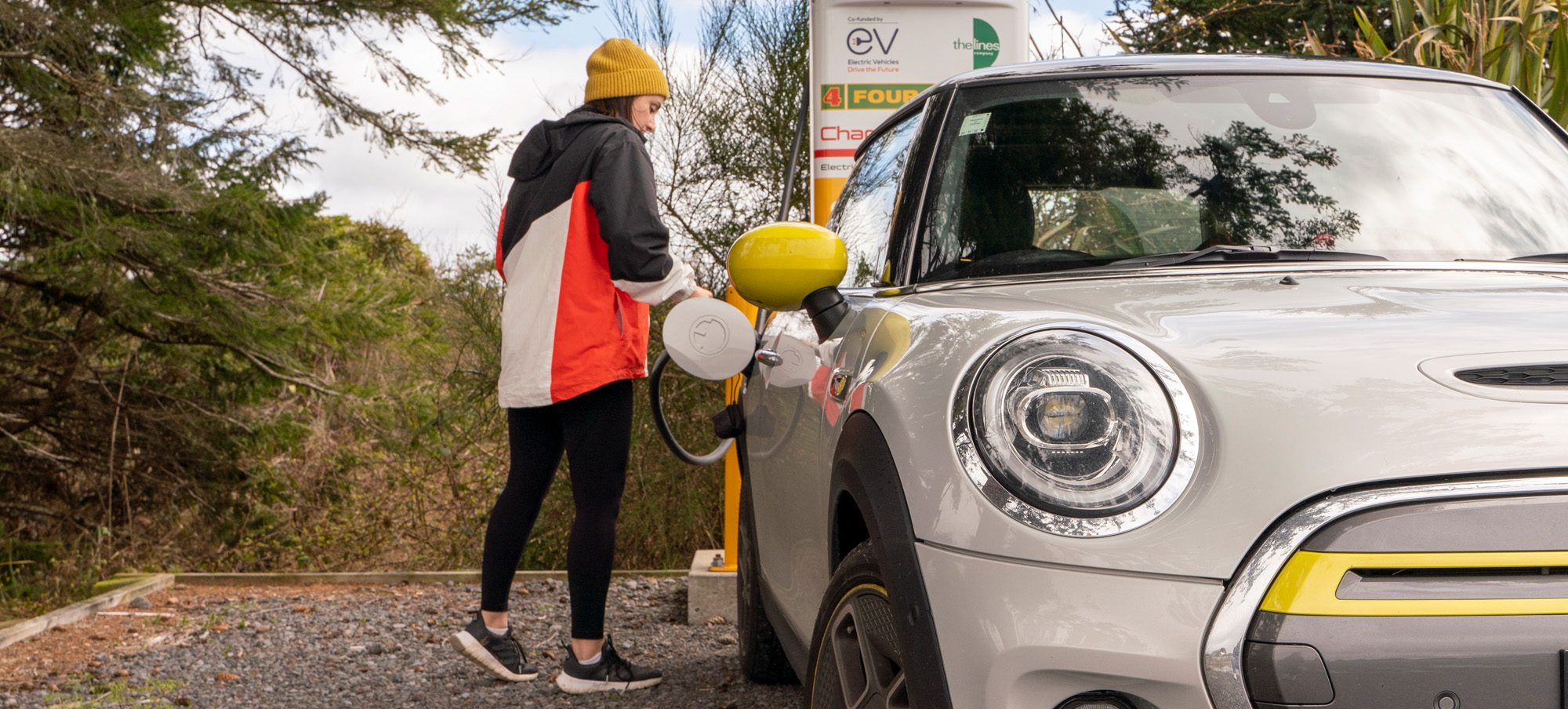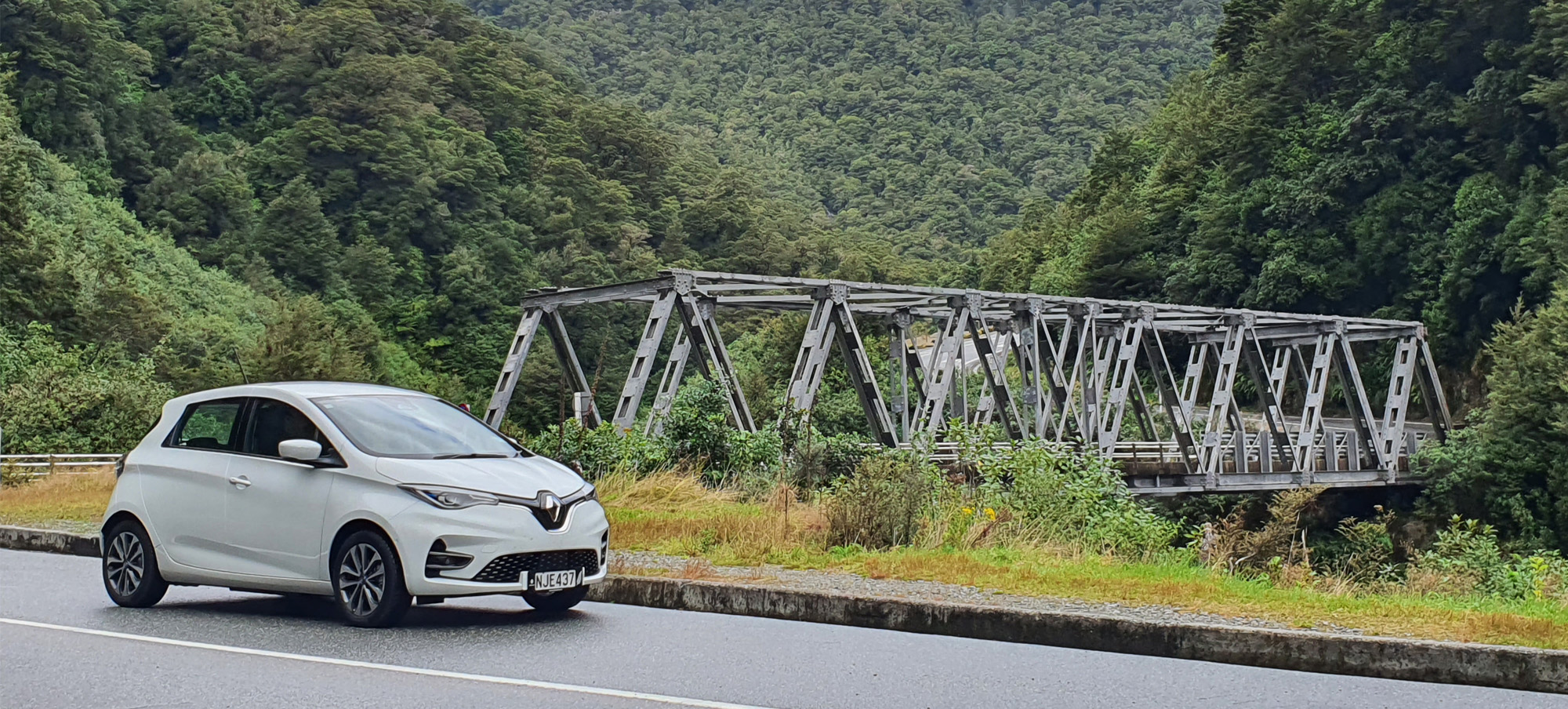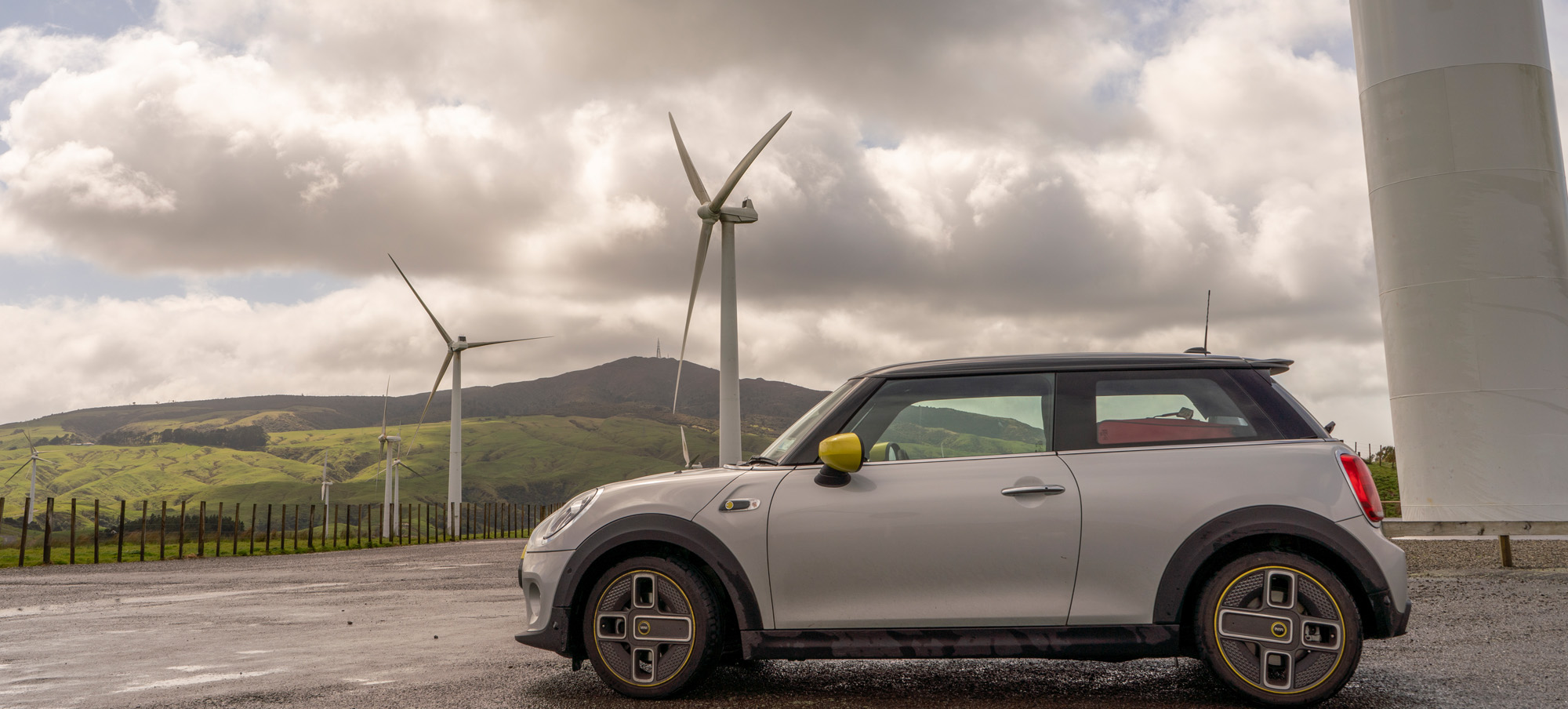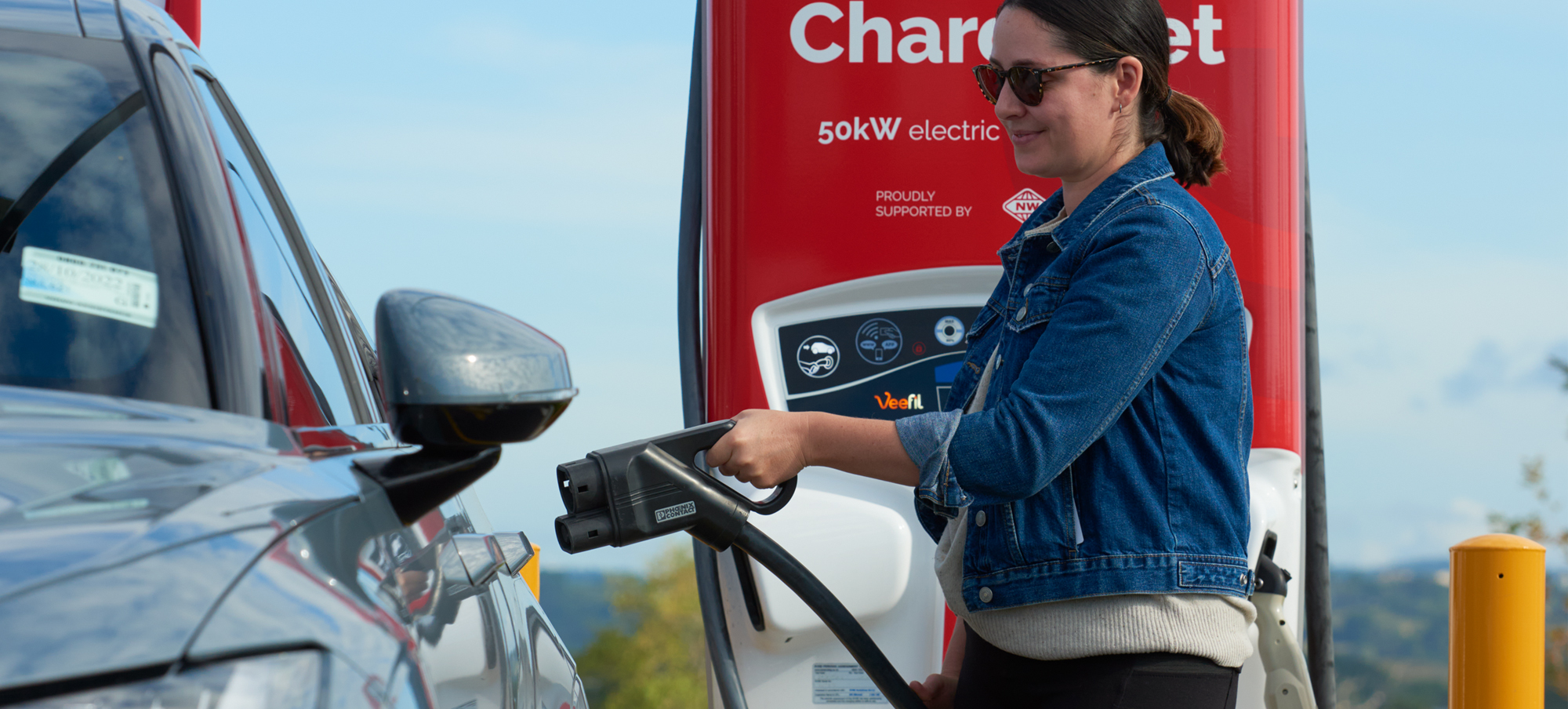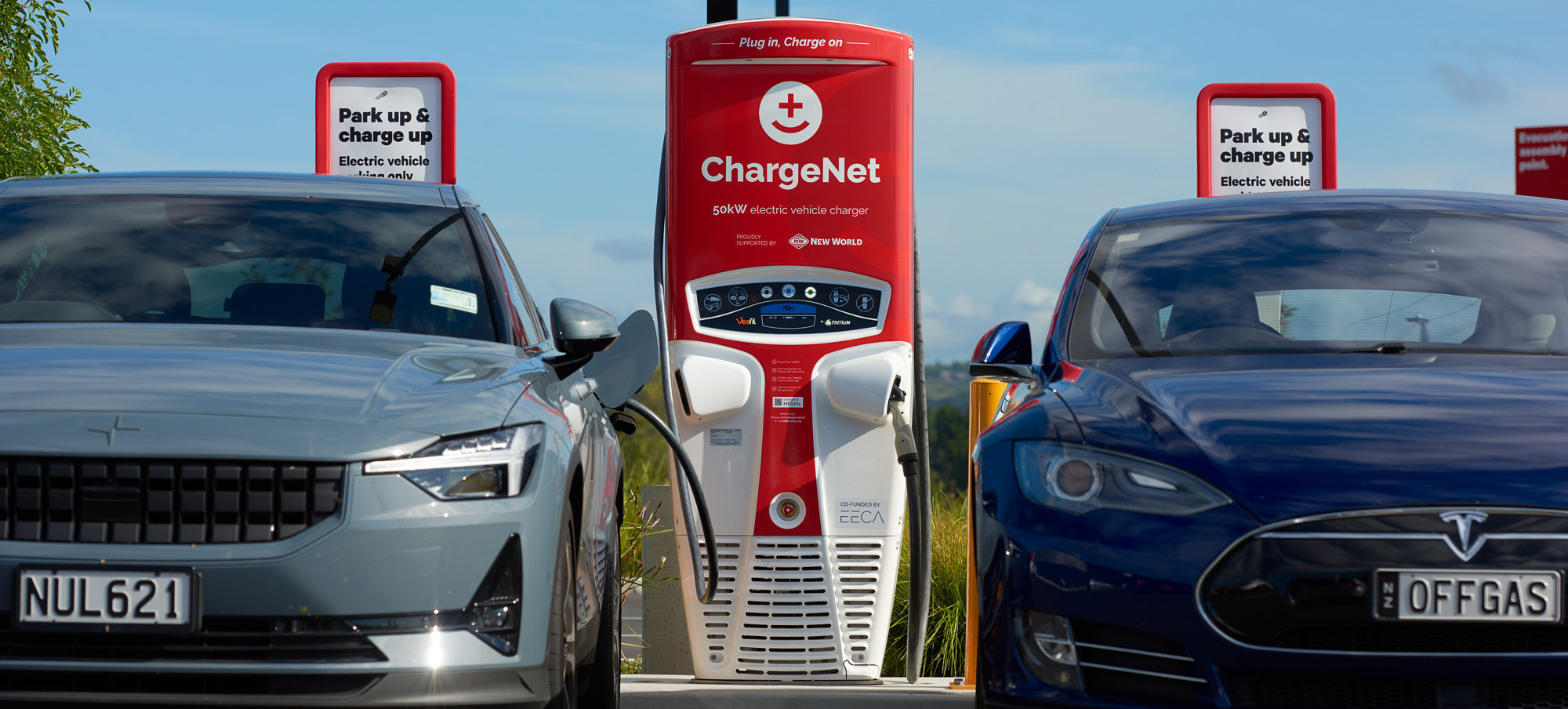

Are you ready to hit the open road and embark on a classic Kiwi tradition? With its 93,000km of roads, New Zealand is a road-tripper’s paradise, and with an EV, you can experience the beauty of the country in a sustainable and eco-friendly way.
In this article, we’ve compiled 10 tips to help you plan a successful and stress-free road trip in your EV. Not only will you save money on fuel costs and reduce your carbon footprint, but you’ll also enjoy quieter and smoother rides through some of the most beautiful scenery in the world.
From planning your route and packing essentials to maximizing your vehicle’s efficiency and connecting with the EV community, we’ve got you covered.
So, buckle up, charge your battery, and get ready to hit the road!
1. Plan your trip in advance
Plan your road trip around public charging points on the way to your destination. While EV charging takes a little longer than filling up with petrol, many charging stations are located next to facilities that allow you to grab a bite to eat, rest, recuperate, or explore the local shops and parks. Before taking your EV on a long-distance road trip or on new routes, plan ahead so that you know where the closest public charging points are and how much time you’ll need to wait while your vehicle charges. Helpful apps, such as the Power Trip route planner can predict your charging needs and schedule charging stops that optimize the amount of time you spend charging your EV while you’re travelling.
2. Shorter charging sessions are often better
Charging your electric vehicle for 15-20 minutes every two hours allows you to stretch your legs, take a bathroom break, stock up on your favourite snacks, and get back on the road faster than one longer charging break. When road tripping in an EV, you don’t really have to charge up to 100%, unless you need the range to get to your next destination. It’s worth remembering that shorter charging stops can result in a faster trip and less time spent charging overall. That’s because it often takes the same time to charge from 80% to 100% as it does to charge the battery from 0-80%. Most fast-charging stations will only let you fill up to 80% to ensure more electric vehicles can utilize the facilities.
3. Charge up where you’re staying
Level 2 chargers are becoming more popular in New Zealand as our EV fleet expands. Take advantage of overnight charging by booking accommodation with EV charging facilities, this way you can park the car when you’re done for the day and power it up overnight. New Zealand has more than 900 hotels around the country with electric charging services. Many of these facilities are free for guests or charge a small parking fee. Camping grounds are also a great option for budget travellers, and there are now more than 54 holiday parks around New Zealand offering EV charging. Charging your EV with your portable 3-pin cable can be a useful backup option. Just remember to ask your host first.
4. Download useful EV apps to plan your trip effectively
Apps can be helpful to ensure you don’t find yourself stranded somewhere without a charge. Good map and weather apps are also a must-have for your trip. With these apps, you can plan your route, check for detours, and see real-time traffic conditions.
Here are a couple of our favourite apps:
- After setting up an account on the ChargeNet app, you’ll have access to the network of over 280 charge points nationwide. With so many stations, it’s easy to plan your trip without making detours. Plus, when you’re on the road, you can see which chargers are currently in use.
- Plugshare is a great resource for viewing chargers open to the public. The app is community driven and shows all DC fast chargers as well as Type 2 AC charging available in New Zealand. It also allows you to filter your charging stops based on the activities you want to do on the charging stops. For example, do you want to take lunch as your charge?
- With Power Trip you can find charging stations, plan your electric vehicle (EV) road trips and reduce your EV charging costs. The Power Trip route planner predicts your charging needs and schedules charging stops that optimize the amount of time you spend charging your EV while you’re travelling.
5. Check the ChargeNet app before you hit the road
The ChargeNet app is designed to make your charging experience seamless from start to finish, and if you’re not already using it regularly, now is a great time to incorporate it into your charging behaviour. After downloading the ChargeNet app, you can:
- Ensure your payment details are up to date on your ChargeNet account
- Check the network status of your chosen charger before you arrive.
- Monitor your charging progress via the app and move on quickly once your charging session has finished.
6. Remember EV Etiquette
As New Zealand’s electric fleet grows, it’s important to remember the do’s and don’ts of EV charging. Early adopters of electric vehicles put together a set of charging etiquette that helps prevent bad behaviour. These came about gradually through trial, common sense, and majority support. ChargeNet helped develop and fully supports the official EV Charging Etiquette. We respectfully ask that you, our customers, do too. Here are a couple of general etiquette tips to get you started:
- All EVs have the right to use public charging stations. However, if you’re not actively charging, you should never park in an EV charging bay.
- Only unplug another vehicle if you’re certain it’s finished charging or have been given permission (for example, through the Plugshare app).
- If your vehicle is charging, ensure you are back before the charging period ends.
- Finally, look after the charger cables and stations and report any damage to the provider.
Master EV etiquette by checking out our article here for a full list of EV etiquette.
7. Have a plan B for where to charge
When you plan your trip, have a plan B for where to charge. Planning your trip around a few charging locations is a good idea and will ensure you can keep moving if your chosen charger is in use or out of order. New Zealand’s charging network is generally busier in some places over the summer, particularly in summer hot spots. Traditionally, the most active charging time across the ChargeNet network is between 12 pm – 5 pm during the holiday season. Charging outside these times or having a second charging location in mind can help minimise disruption to your charging schedule.
8. Pack your portable 3-pin cable and type 2 cable as back up
Most EVs come with a portable 3-pin cable that can be plugged into any standard wall socket. These “granny cables” can come in handy if you are faced with an unexpected or sudden change of plan. It’s also worth investing in a type 2 cable to make use of level 2 chargers. Learn more about which cables you should travel with here.
9. Explore the whole range of available charging options
There are a number of different options when it comes to charging your EV. If you’re in a hurry, you can use a DC Fast charger, which is great when you need a quick top up, however, if you’re not in a hurry, charging at home or using a Level 2 charger, while these options will take far longer to charge than a fast charger, it can also save you in a pinch.
Different chargers work at different rates:
- Level 1 chargers (using a standard three-pin plug) are like your home electrical wiring and will take many hours (or days!) to give you a full charge.
- Level 2 chargers might work for you if you want to spend a few hours nearby checking out the sights. These are chargers are most commonly BYO cables. You’ll find Level 2 chargers at home or in a carpark where you can park for at least an hour. These stations are sometimes free to use for ChargeNet customers.
- Level 3 or DC Fast chargers (our specialty) offer the quickest charge, which can get you to an 80% charge in as little as an hour. These always have a cable attached, which you simply plug directly into your car.
10. Understand your EV
Before leaving on a road trip, it’s important to know your EV range and what charge rate it can handle. If you need to stop at a rapid charger, ensure you know your vehicle’s maximum charge rate. For example, if your EV’s maximum charge rate is 50kW, it will not be able to charge any faster than 50kW when using a 50kW charge point. If it’s your first road trip in an EV, it’s worth noting that your actual range can vary. Cold weather, using the air conditioner or heating, speeding, rapid acceleration or deceleration and driving uphill all decrease your mileage.
Knowledge Base
Visit Knowledge Base

